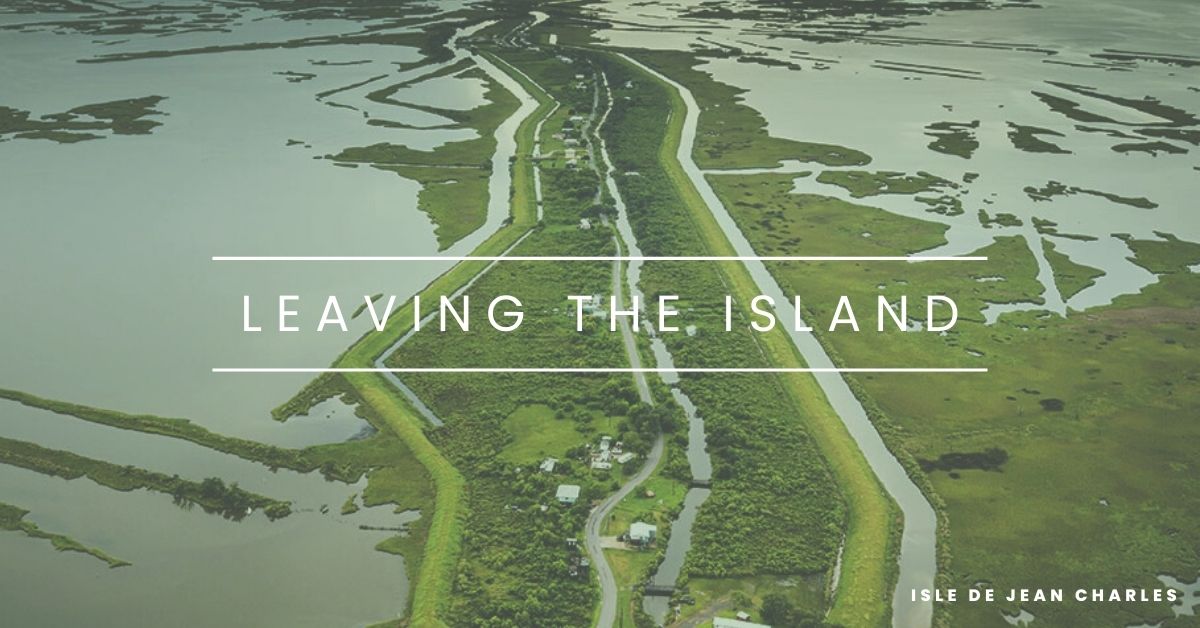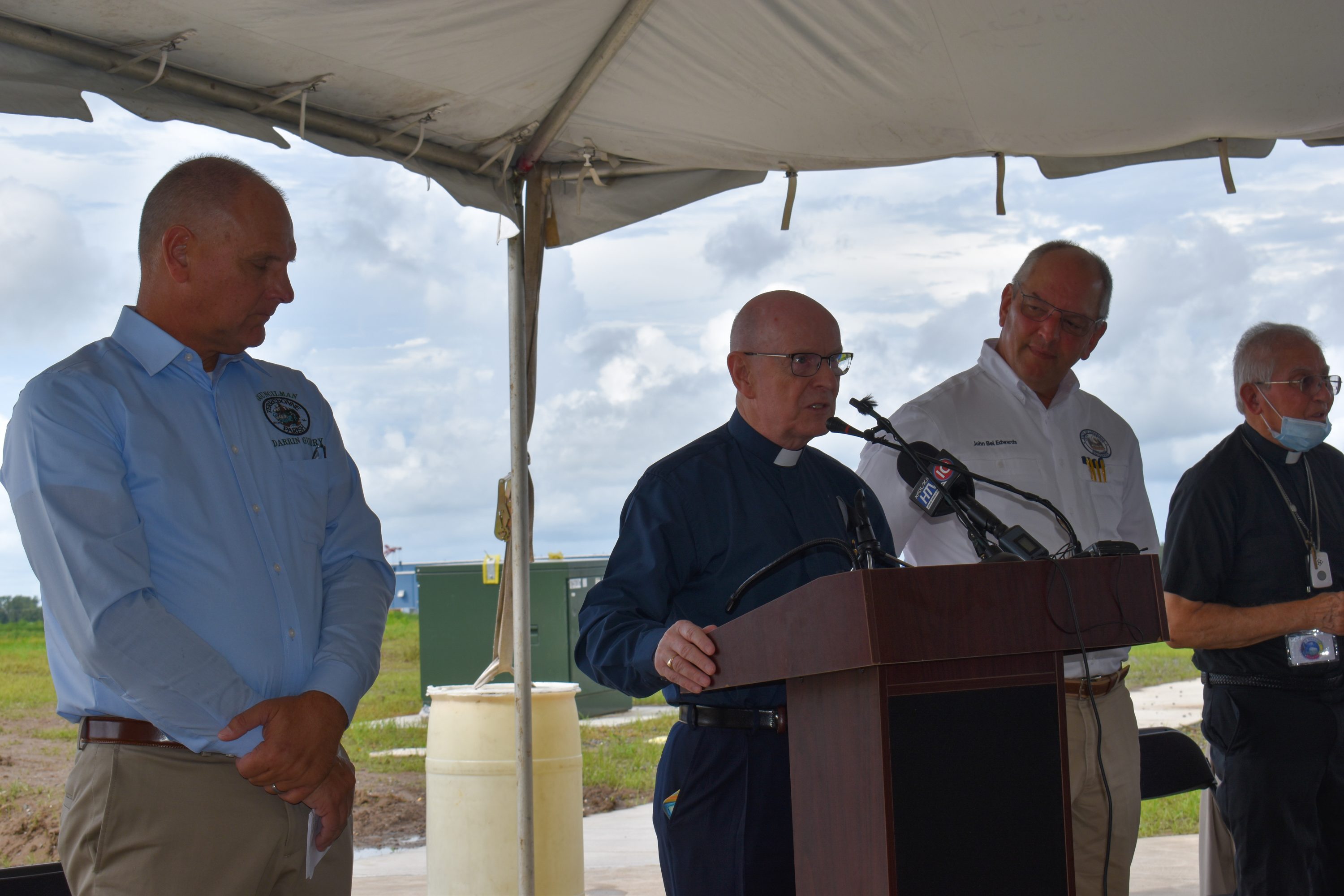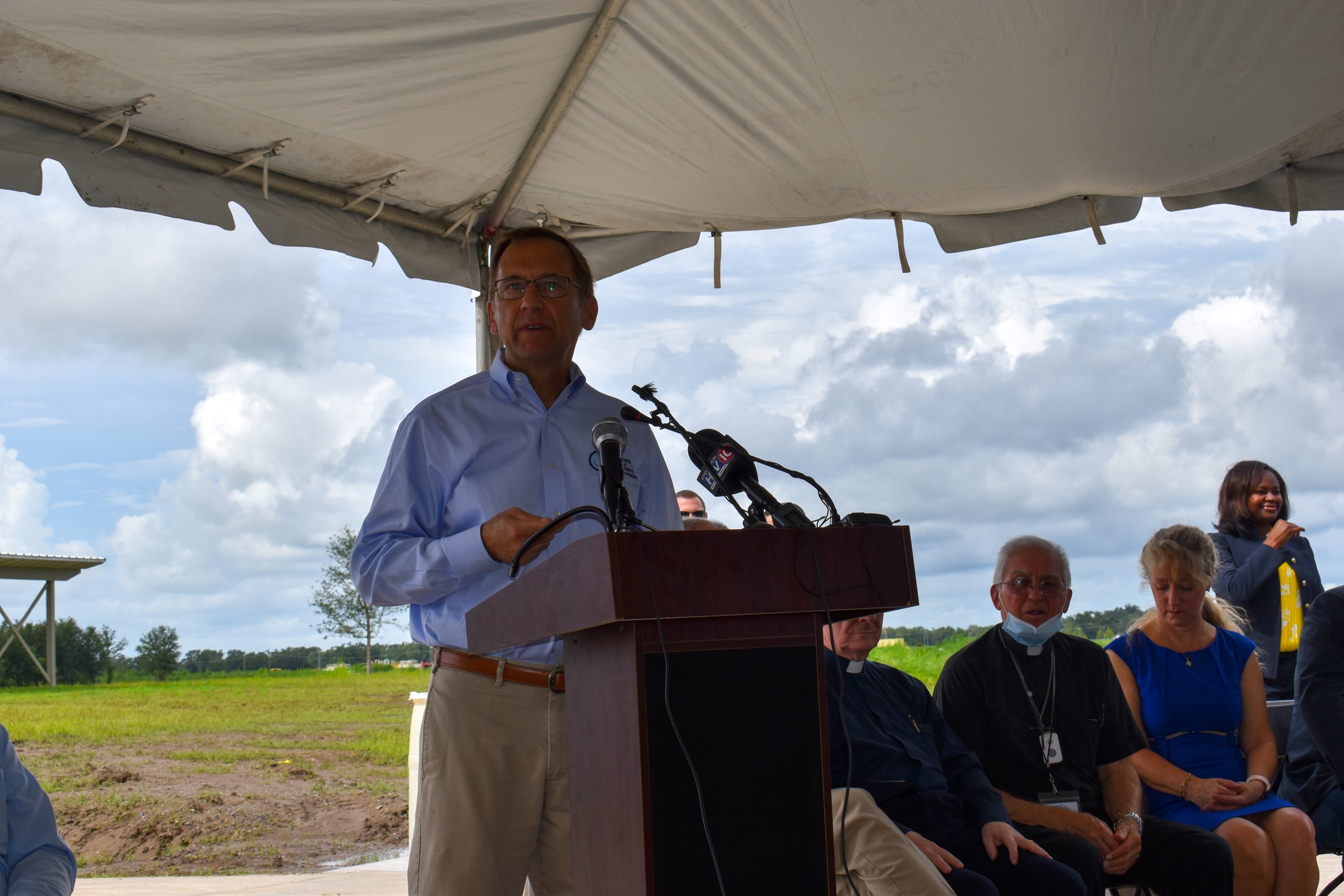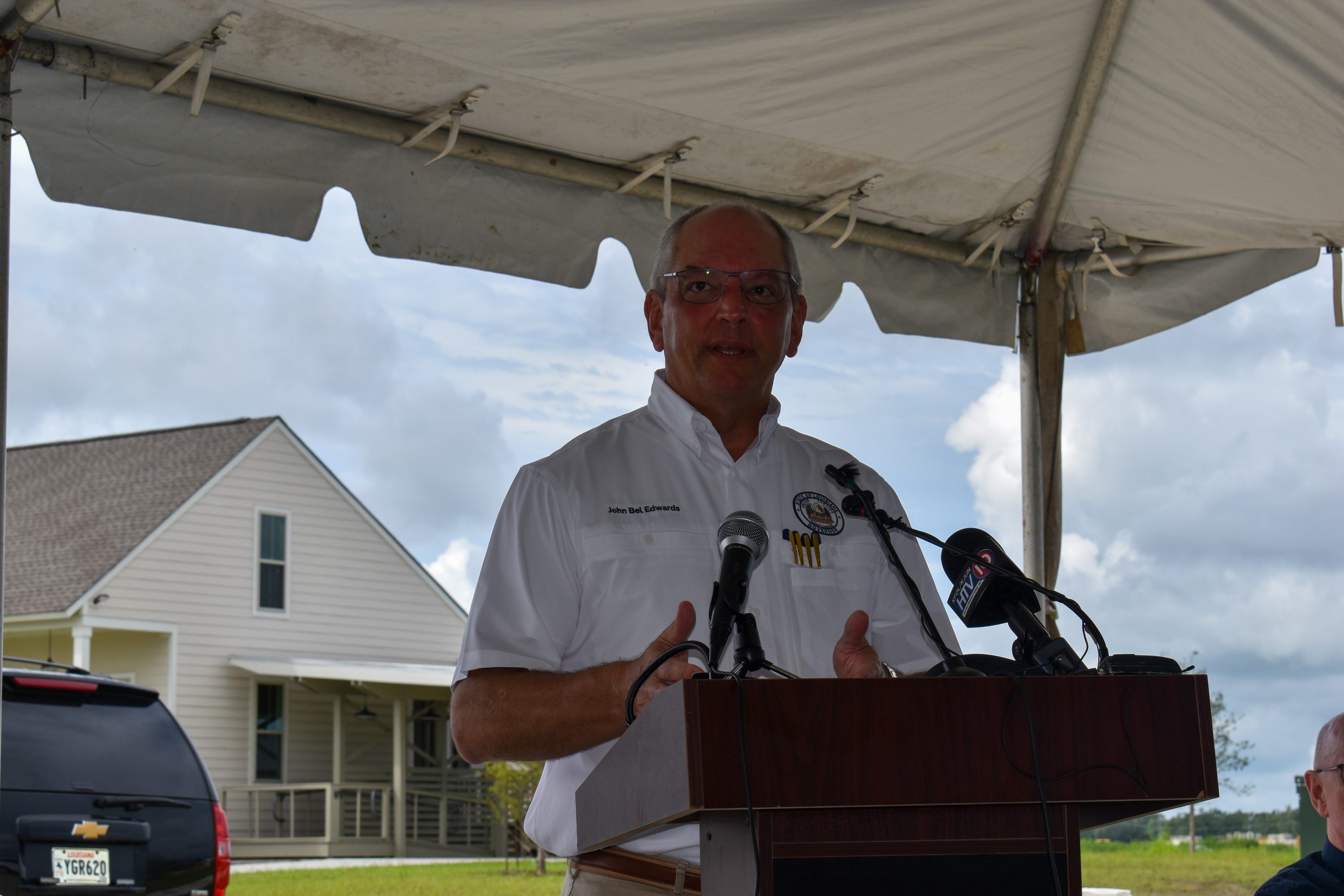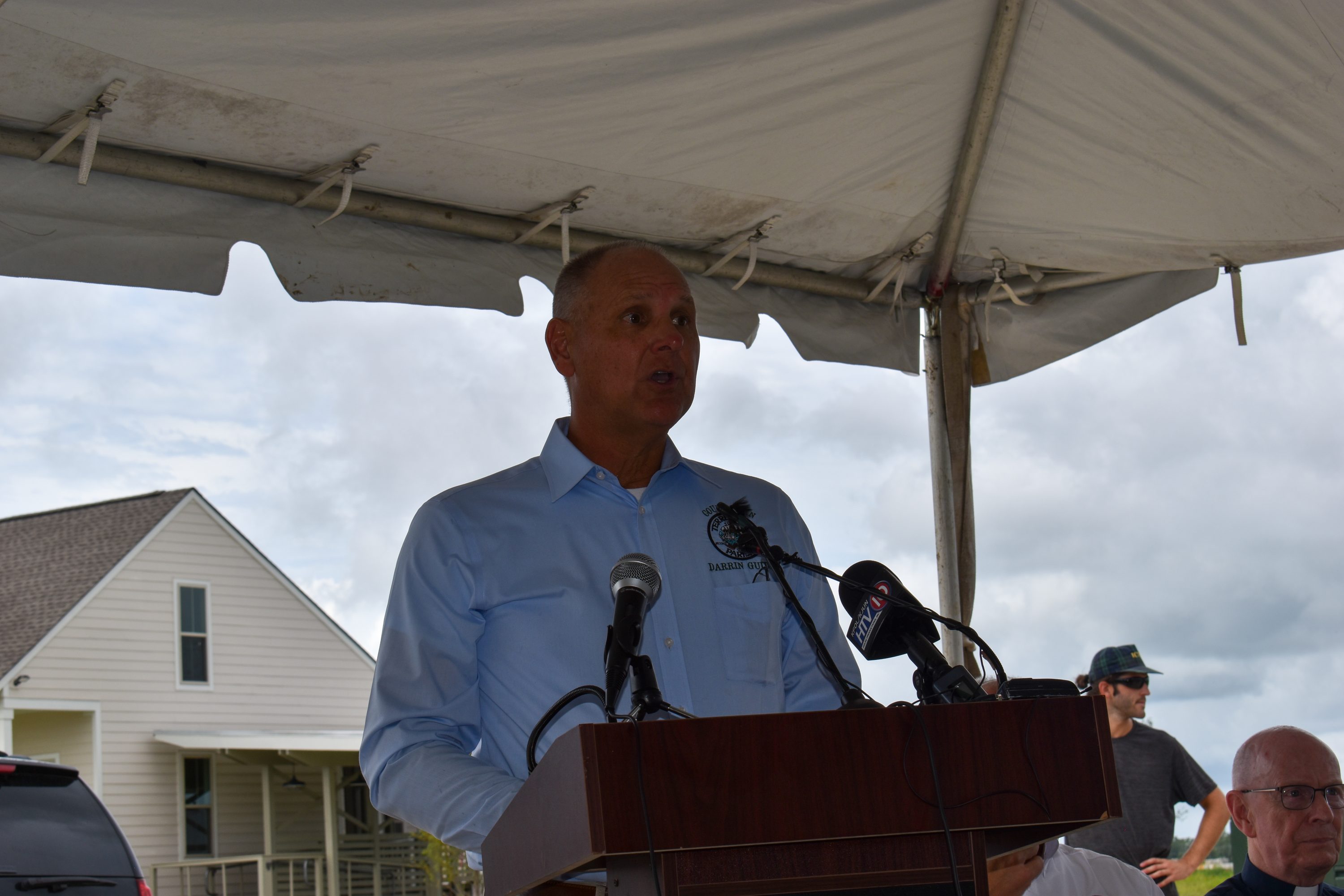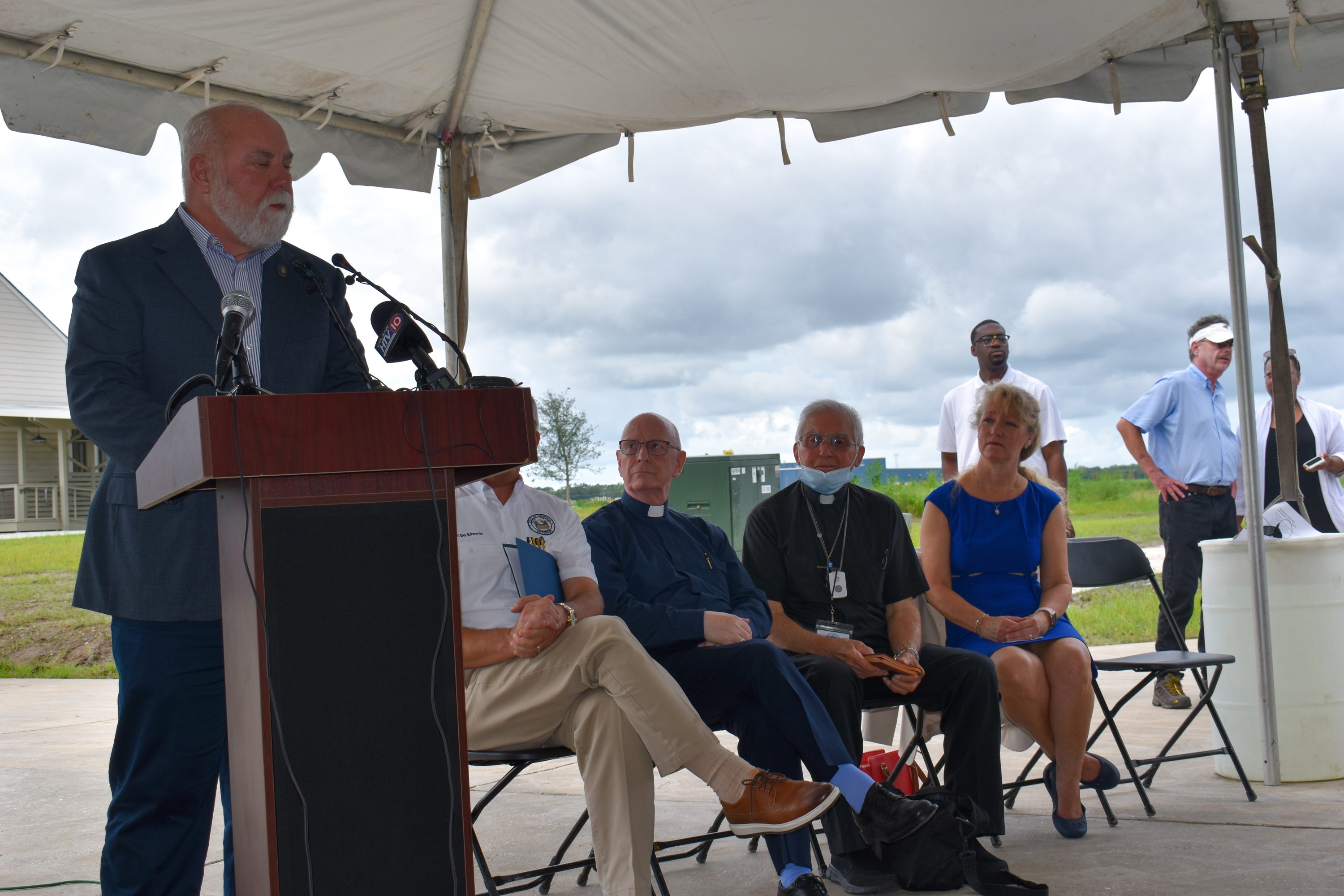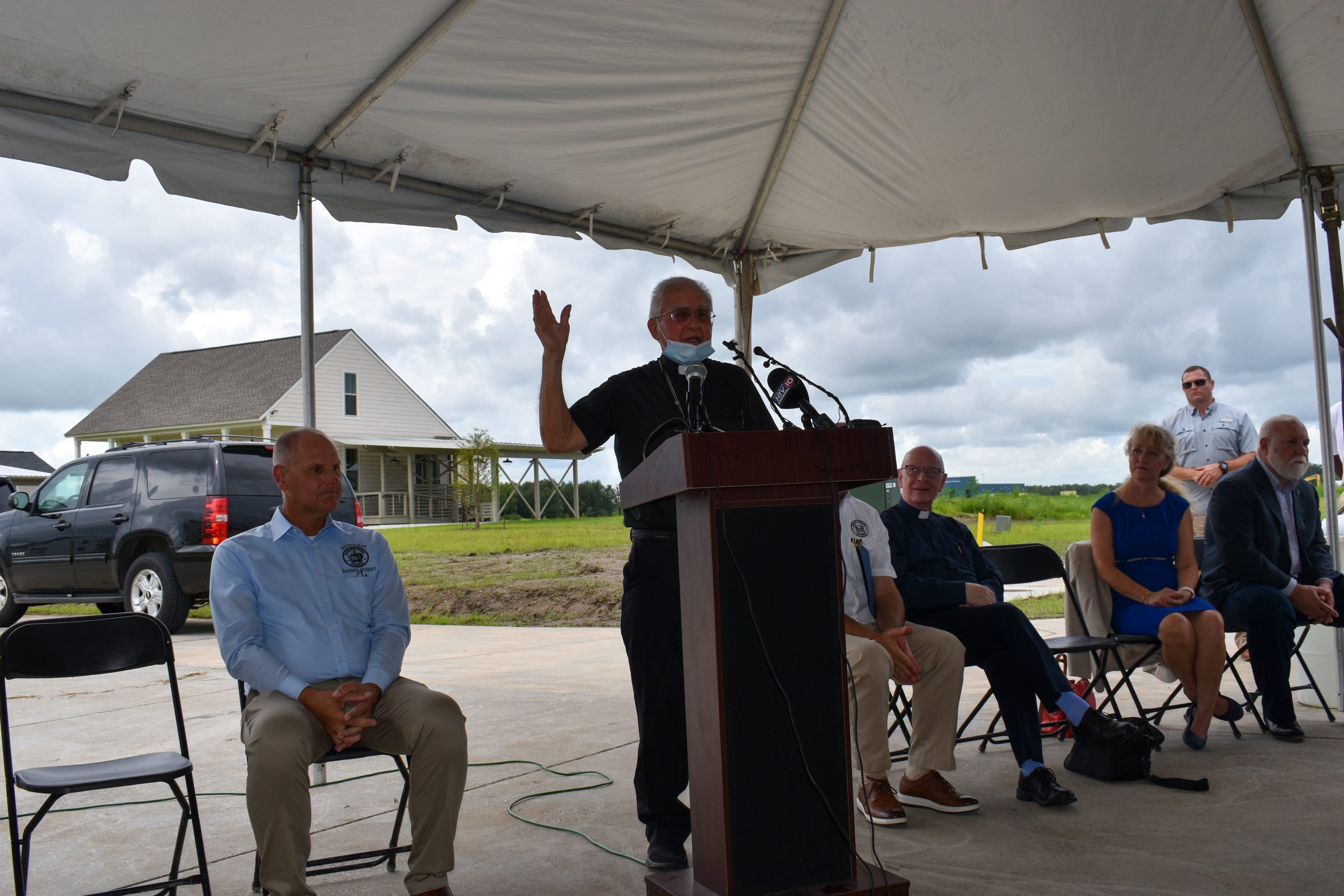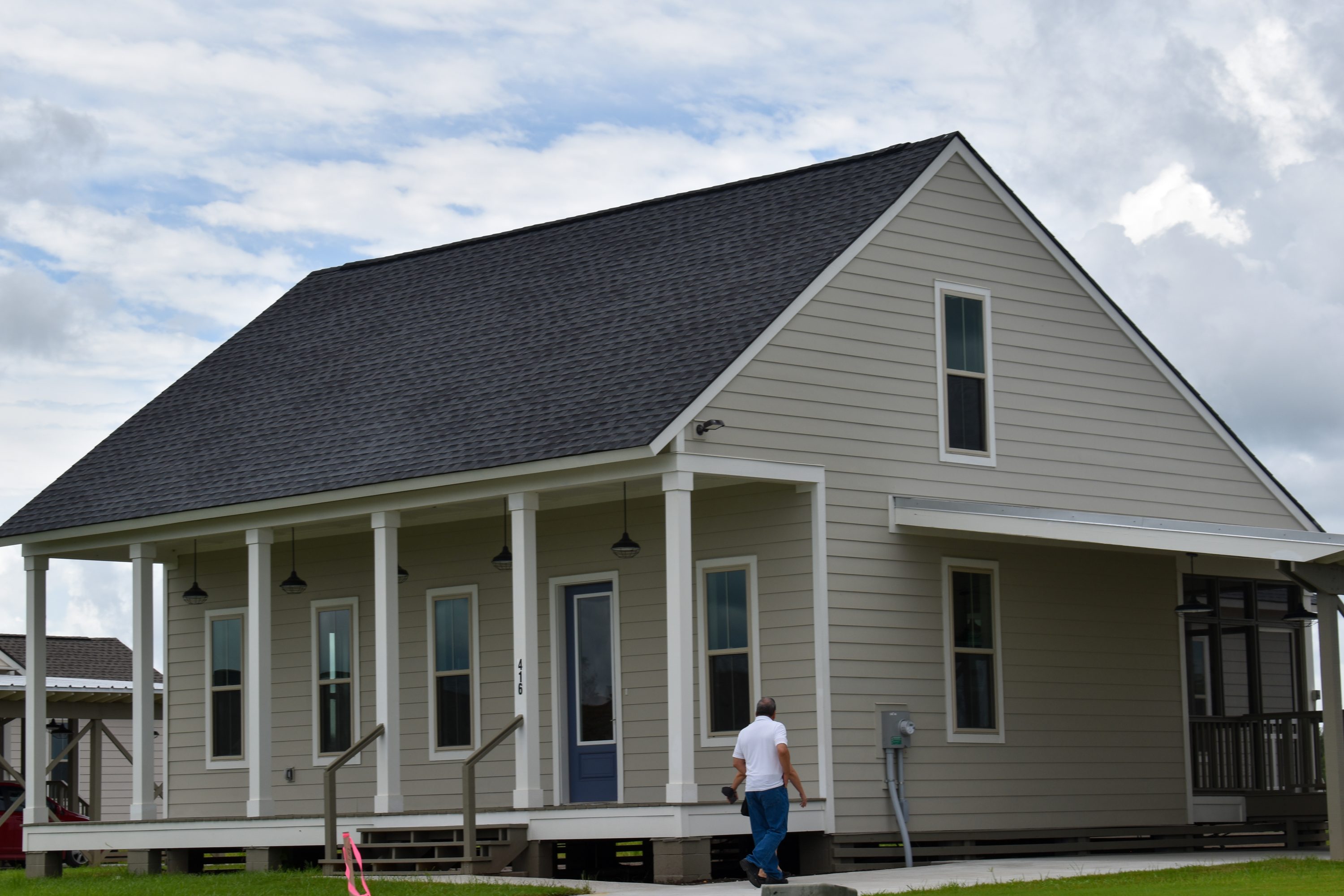
Rougarou Fest releases music line-up
August 24, 2022
TPSO asks for help in theft at a local business
August 24, 2022Governor John Bel Edwards along with local leaders and partners gathered today in Gray at The New Isle to celebrate a new beginning for Isle De Jean Charles residents.

Isle De Jean Charles
Culture is rooted deep in South Louisiana and the community of Isle de Jean Charles in Terrebonne Parish has a rich history dating back to over 170 years ago. The area has quickly become a victim of coastal erosion and residents have started to move to higher ground.
“Today is a new day for the proud residents of Isle de Jean Charles as they take ownership of their new homes in a safer and more resilient community,” said Gov. Edwards. “Getting to this day has not been easy, but I’m grateful to the tribal leaders, the residents, HUD, the Office of Community Development led by Pat Forbes, and everyone whose hard work made this day possible. To understand how a once sprawling and vibrant community of thousands of acres has dwindled to little more than a few hundred is to understand the real consequences of climate change. The residents of Isle de Jean Charles did not want to leave their island; on the contrary, the island left them. They deserved and needed help, which is why our state invested years of planning, outreach, design, and construction into The New Isle resettlement community. This is a nationally and internationally observed and eagerly awaited event for us all.”
Although the situation is bittersweet for the residents, the resettlement has been guided by Isle de Jean Charles residents. In 2018, the state purchased 515 acres of high land in Gray which is about 40 miles north of the island. The state then designed and built the newly constructed community in collaboration with the residents. The homes are single-family homes that are designed to withstand up to 150 mph sustained winds and are up to fortified standards. The community also includes an event space where residents can hold powwows, festivals, and other cultural events as well as a market and community center.

© usga.org
When it comes to moving to higher grounds, Al and Mildred Naquin were thankful for the opportunity. The couple, married for 49 years, walked hand-in-hand to their new home in The New Isle. They shared that it’s a relief to not have to worry about rising waters in their yard no longer. Their family home lies on a canal and they recollected the moment their daughter caught her first redfish from the canal.
Before the canal was built to the areas, Mr. Naquin remembered water rising in their yard just when the south winds would hit and tides were high. “When we’d wake up, they had water all in our yard,” Mrs. Naqiun remembered, “our kids would have a blast. They couldn’t go to school.” “It was like a nature preserve,” Mr. Naquin chimed in, “they had alligators in the backyard, otters playing…one storm we had dead fish that filled our backyard.” When asked about the difference between growing up and now, the couple said the threat wasn’t always evident as it is now, “They have walls and rocks going along the highway, all of that wasn’t there before we got married,” Mr. Naquin said.
The island that is slipping into the Gulf of Mexico is rich in history. It’s home to the Isle de Jean Charles Band of Biloxi-Chitimacha-Choctaw Tribe. The resettlement project is much more than the sad reality of coastal erosion and climate change; it’s the reality of preserving knowledge, traditions, and tribal history. According to the Tribe’s oral history, the inhabitants began in the early 1800s when Jean Marie Naquin, a Frenchman, married Pauline Verdin, a Native American. The island was considered “uninhabitable swamp land” until 1876 when the State of Louisiana began selling the land to private individuals. Before this, it was illegal for Native Americans to purchase land. Also, until the “Island Road” was built in 1953, the only mode of transportation to and from the island was by boat. For more information about the beautiful culture of the island, visit the Isle de Charles website.
The resettlement comes after years of planning finally coming together. It was funded through a $48 million grant from the U.S. Department of Housing and Urban Development as part of the 2016 National Disaster Resilience Competition. We have all heard one day that Louisianans may have to migrate due to coastal erosion, and residents of Isle de Jean Charles are our state’s first climate refugees. The area has seen a 98 percent loss of land since 1955 and that risk rises every year.
Homes at The New Isle are available to those who live on the island and those displaced since Hurricane Isaac’s landfall in 2012 (Option A). Those displaced before Isaac also can rejoin the Isle de Jean Charles community by building their own homes on free lots (Option B). For more information, visit IsledeJeanCharles.la.gov.
- © Heidi Guidry
- © Heidi Guidry
- © Heidi Guidry
- © Heidi Guidry
- © Heidi Guidry
- © Heidi Guidry
- © Heidi Guidry

